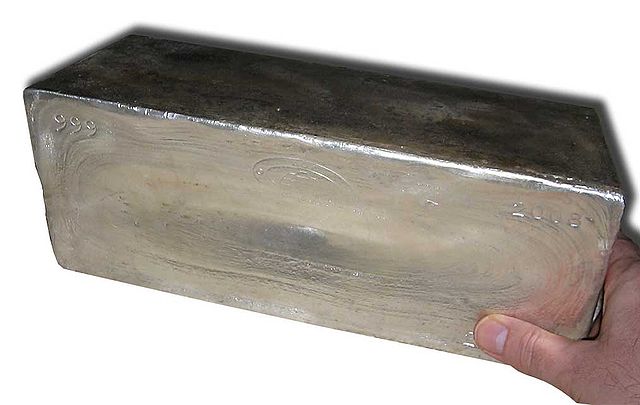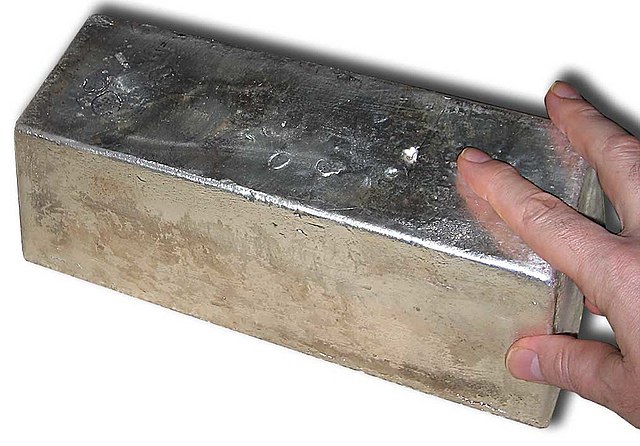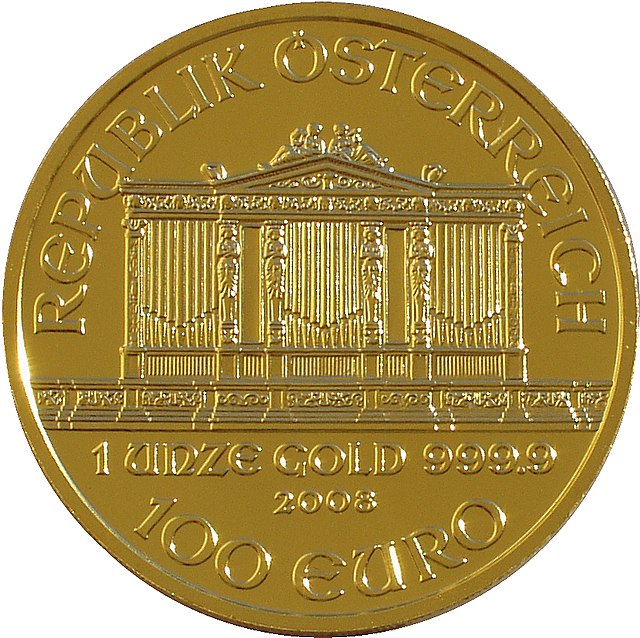Troy weight is a system of units of mass that originated in 15th-century Kingdom of England and is primarily used in the precious metals industry. The troy weight units are the grain, the pennyweight, the troy ounce, and the troy pound. The troy grain is equal to the grain unit of the avoirdupois system, but the troy ounce is heavier than the avoirdupois ounce, and the troy pound is lighter than the avoirdupois pound. One troy ounce equals exactly 31.1034768 grams.
Troy ounce is a traditional unit of gold weight.
One-troy-ounce (480 gr; 31 g) samples of germanium, iron, aluminium, rhenium and osmium
A Good Delivery silver bar weighing 1,000 troy ounces (83 troy pounds; 31 kg)
The standard British troy pound manufactured in 1758; it bears the abbreviation ℔ ("pound") and the letter "T" for troy.
Precious metals are rare, naturally occurring metallic chemical elements of high economic value. Precious metals, particularly the noble metals, are more corrosion resistant and less chemically reactive than most elements. They are usually ductile and have a high lustre. Historically, precious metals were important as currency but are now regarded mainly as investment and industrial raw materials. Gold, silver, platinum, and palladium each have an ISO 4217 currency code.
Gold nugget
1,000 oz silver bar
500 g silver bullion bar produced by Johnson Matthey
1 oz Vienna Philharmonic gold coin








